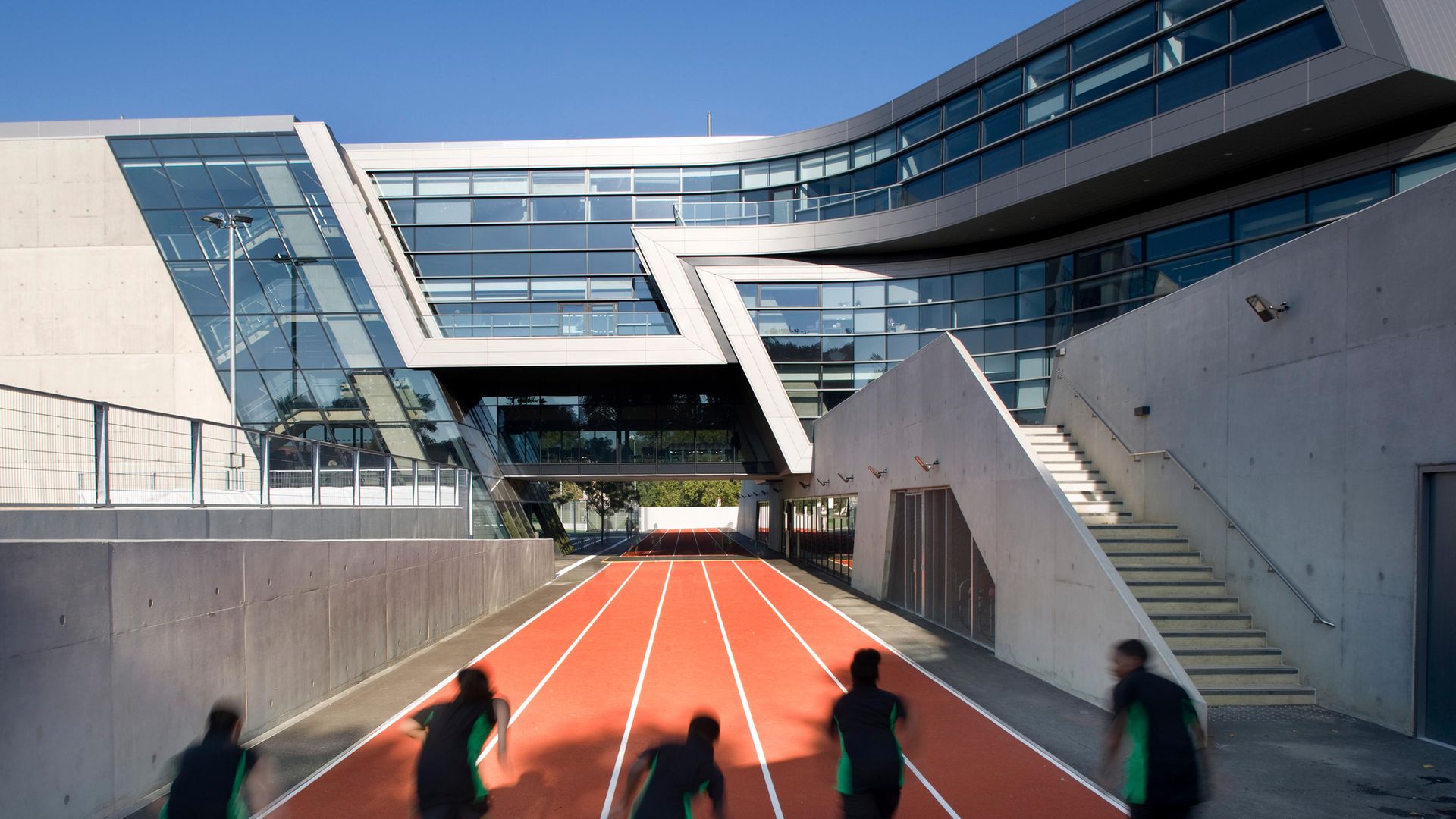
WILL SELF on a neighbourhood mystery that has been troubling him.
What links Alice Walker, Langston Hughes, Pablo Neruda and James Joyce? They’re all ranged along Shakespeare and opposite Evelyn Grace. But who is or was Evelyn Grace? I don’t know – I phoned her eponymous Academy and the receptionist said: “Isn’t that something you’d research on the internet?” I told her I’d already tried this – but drawn a blank, so she then put me through to a woman in marketing who she thought might help me. Needless to say the woman in marketing didn’t pick up, so at the time of writing I remain in ignorance of who this titular figure is. She must be someone fairly impressive, though, to’ve had a large educational establishment named after her. According to the Principal’s Vision for the school: “Ultimately, we learn best when we learn together and this means that we train, plan, teach, reflect and share together. There can be no secret gardens where excellent resources or practice is hidden from view.”
Hear! Hear! The celebrated African-American writers Alice Walker and Langston Hughes both have closes named after them – while the Chilean poet, politician and diplomat, Pablo Neruda, gets a walk – as does James Joyce. Shakespeare, being our national poet and dramatist gets yet another road, but this one is no more impressive than any of the others named for him. It is however longer than Spenser, Milton and Chaucer Roads, which run parallel with it up until the railway line from Loughborough Junction to Herne Hill. They stop there – but Shakespeare dives under the embankment then dog-legs to the north, passing between the aforementioned closes, walks, and of course Evelyn Grace’s academy – which is a dramatic structure: a giant shuttered-concrete-and-glass zed shape, its long decks of classrooms cradling a one hundred metre running track.
Designed by the late Zahar Hadid, the so-called ‘Queen of the Curve’, whose parametric architecture always makes me think of a jeu d’esprit embarked upon by a wayward artificial intelligence, the Academy building won the Stirling Prize in 2011. Looked at as a sort of progressive map of contemporary British culture, the environs of the Academy begin to make sense: Spenser, Milton and Chaucer terminate at the railway line – as does the grand tradition of dead white males so lauded by FR Leavis. Only Shakespeare carries the muse through the industrial, and into the post-industrial age, where she joins the post-colonial quartet of Walker, Neruda, Hughes and Joyce.
Set up by a trio of vastly wealthy hedge fund managers, the Ark schools, in common with other academies, are allowed to promote their own values through their curriculum – to some extent. But of course they didn’t name the streets in the purlieu of the Evelyn Grace Academy, just one of the 38 schools they’ve founded – that’s presumably down to some wonk in Brixton town hall. No, this is a sort of serendipity, whereby culture, topography and the built environment have become fused. At the corner of Railton and Shakespeare Roads, on the other side of the railway line from the Academy, we find the house where the Trinidadian writer and activist, CLR James, lived for the last eight years of his life. James made his name as a cricket writer for what was then the Manchester Guardian, and although he wrote many books, my favourite of his is Beyond a Boundary, a mixture of memoir, sports writing and political rumination.
James gets a blue plaque from English Heritage – as he should: and it’s his now numinous presence that marks the transition between the old-style ‘poets’ corner’ to the west, and the rising cultural figures to the east. Beyond a boundary, indeed. But that still begs the question: Who is or was Evelyn Grace? Her Academy has a section on its website about “promoting British Values”; and these turn out to be – in case you didn’t know – democracy, the rule of law, individual liberty, mutual respect, and tolerance for different faiths and communities. Evelyn Grace takes its lead on this from the 2011 Prevent Strategy introduced by the coalition government as response to the terror attacks of the 2000s. I find it a little bizarre that the only positive enunciation of British values the school can articulate is in this embattled context – all of which makes me wonder again: who is or was she?
I’ve called the Academy back – but this time I only got an answer phone. I’ll keep trying, though – because we’re all in a need-to-know situation. The academy schools were, if you remember, the brainchild of good old New Labour: a way of channelling philanthropic money from the heights of financial speculation to the depths of social deprivation. Looked at this way, Zahar Hadid’s zed is a sort of colossal stalagmite, formed by trickle-down economics. Looked at another way, the entire Ark project is made in the image of its founders: a sort hedge-bet against the consequences of social and economic exclusion. Anyway, the Academy is housed in this impressively commanding building, and named for someone who, at the time of writing, remains obscure – whereas over the road, Walker, Joyce and the others are represented by assemblages of undistinguished low-rise 1980s social housing. How the world turns!










